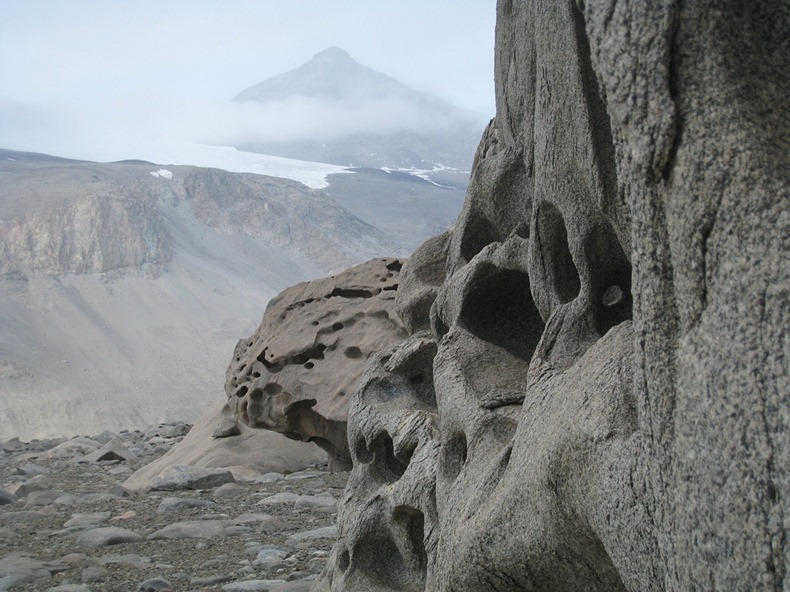McMurdo Dry Valleys of Antarctica: The Driest Place on Earth
Antarctica is covered with ice, but not all of it. The McMurdo Dry Valleys is almost entirely snow free. Located among mountains by McMurdo Sound, on the part of Antarctica closest to New Zealand, the valleys receive the equivalent of only 10 cm of water, on average, each year in the form of snow. Completely devoid of terrestrial vegetation, the region is considered one of the most extreme deserts and the driest place on the planet. At 4,800 square kilometers, the valleys constitute around 0.03% of the continent, and form the largest ice-free region in Antarctica.
The Dry Valleys are so different from the rest of the continent because of its location. The Valleys are nestled between the mile-high Transantarctic Mountains which block seaward flowing ice from the East Antarctic ice sheet from reaching the Ross Sea. Several tongue-like glaciers creep through the gaps, but any ice that breaks off of the glaciers quickly goes from solid to vapor in the arid atmosphere. The unique conditions in the Dry Valleys are also caused, in part, by katabatic winds; these occur when cold, dense air is pulled downhill by the force of gravity. The winds can reach speeds of 320 kilometers per hour, heating as they descend, and evaporating all water, ice and snow.

Initially, the Dry Valleys were thought to be lifeless. Not surprisingly, explorer Robert Scott, who discovered the Valleys in 1903, looked over one of them and called it “a valley of death.” But Scott was wrong.
Researchers have discovered that the Dry Valleys are home to a variety of extremophiles (organisms that live in extreme environments). Among them are lichen and mosses, communities of microbes (including cyanobacteria), and nematodes (microscopic worms). These organisms have undergone profound changes that allow them to survive in one of the most punishing environments on the planet.
Bacteria have been found living in the Dry Valleys, sheltered from the dry air in the relatively moist interior of rocks. Anaerobic bacteria whose metabolism is based on iron and sulfur live in sub-freezing temperatures under the Taylor Glacier, staining red the ice emerging at Blood Falls
Scientists consider the Dry Valleys perhaps the closest of any terrestrial environment to the planet Mars, and thus an important source of insights into possible extraterrestrial life.

The wind and the gritty groundcover mix, together sculpt some of the rocks into smooth, oddly shaped formations called ventifacts. Photo credit







No comments:
Post a Comment